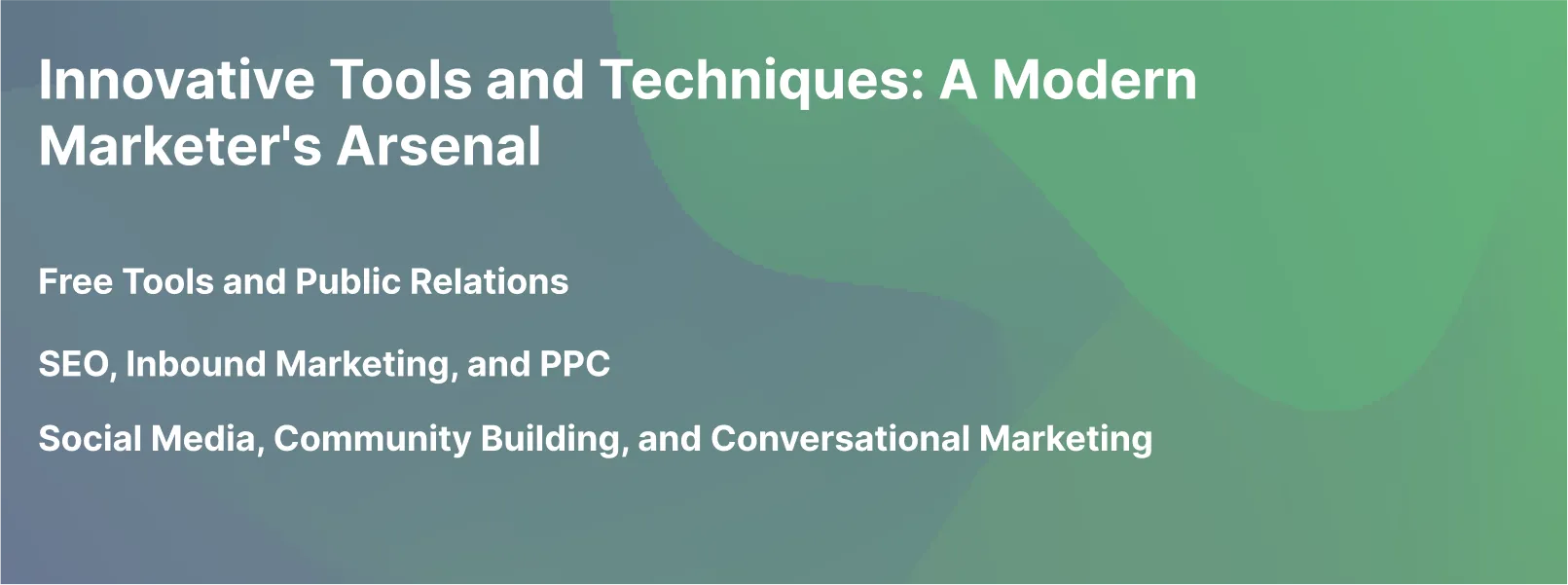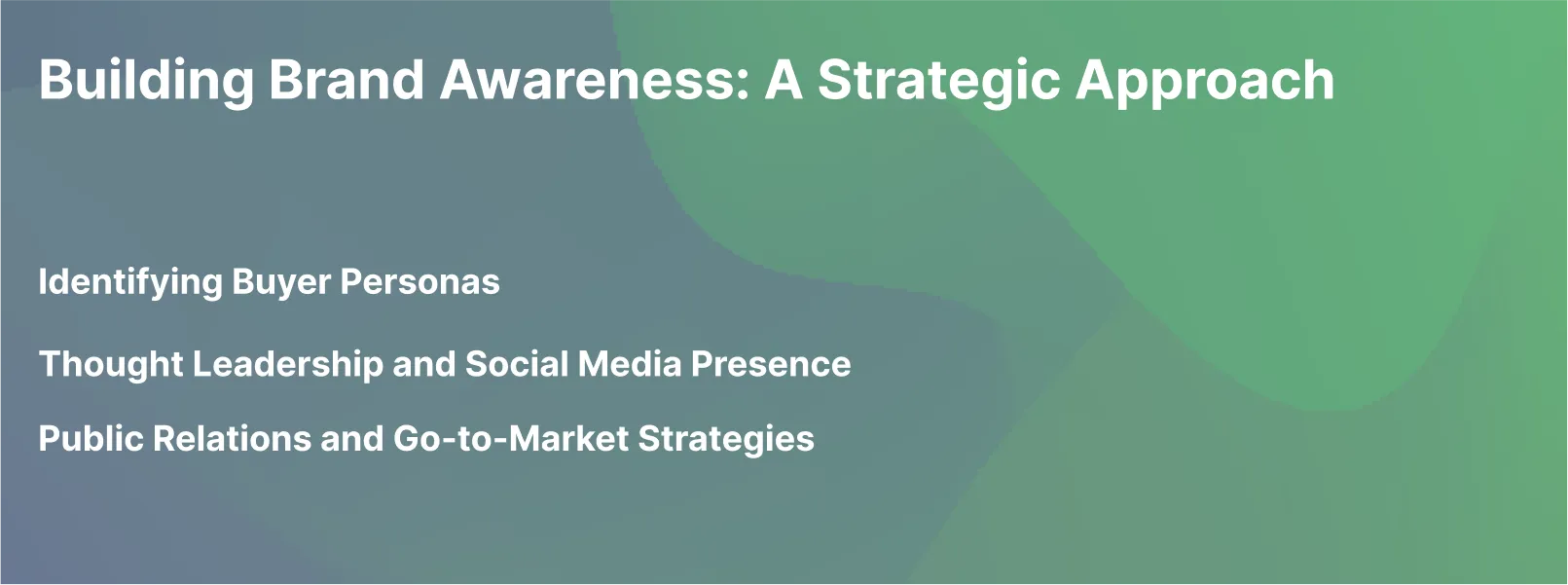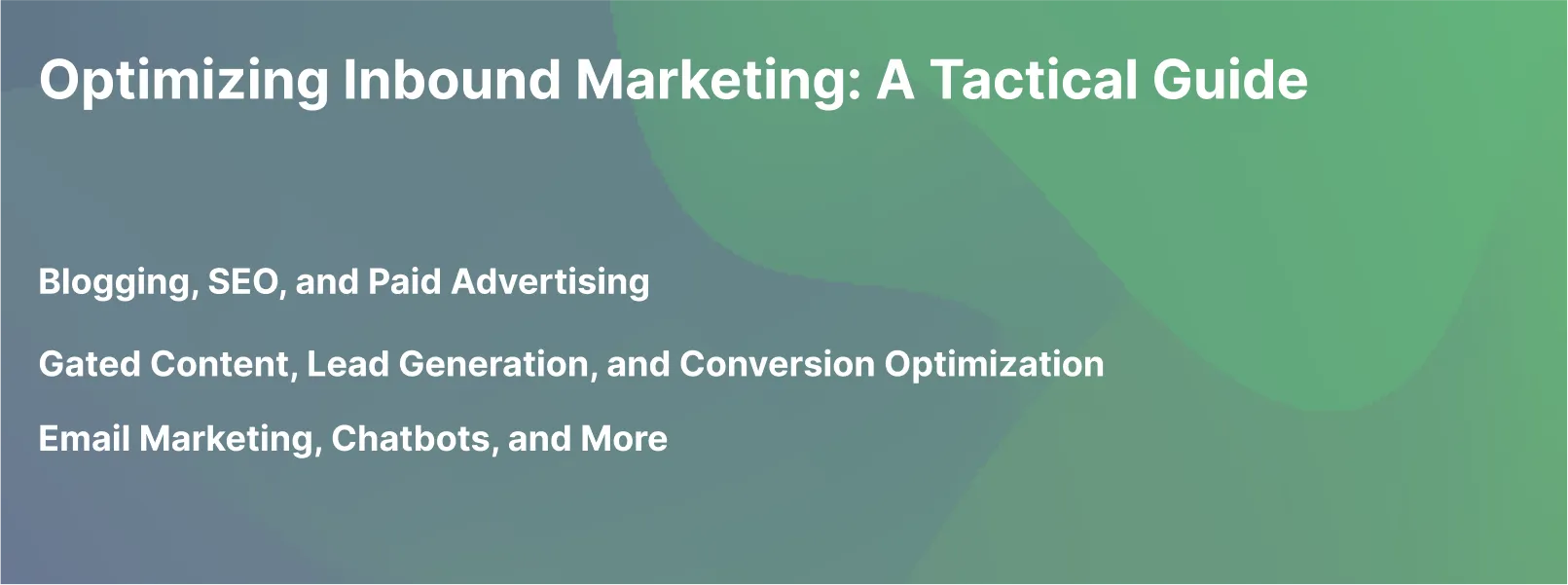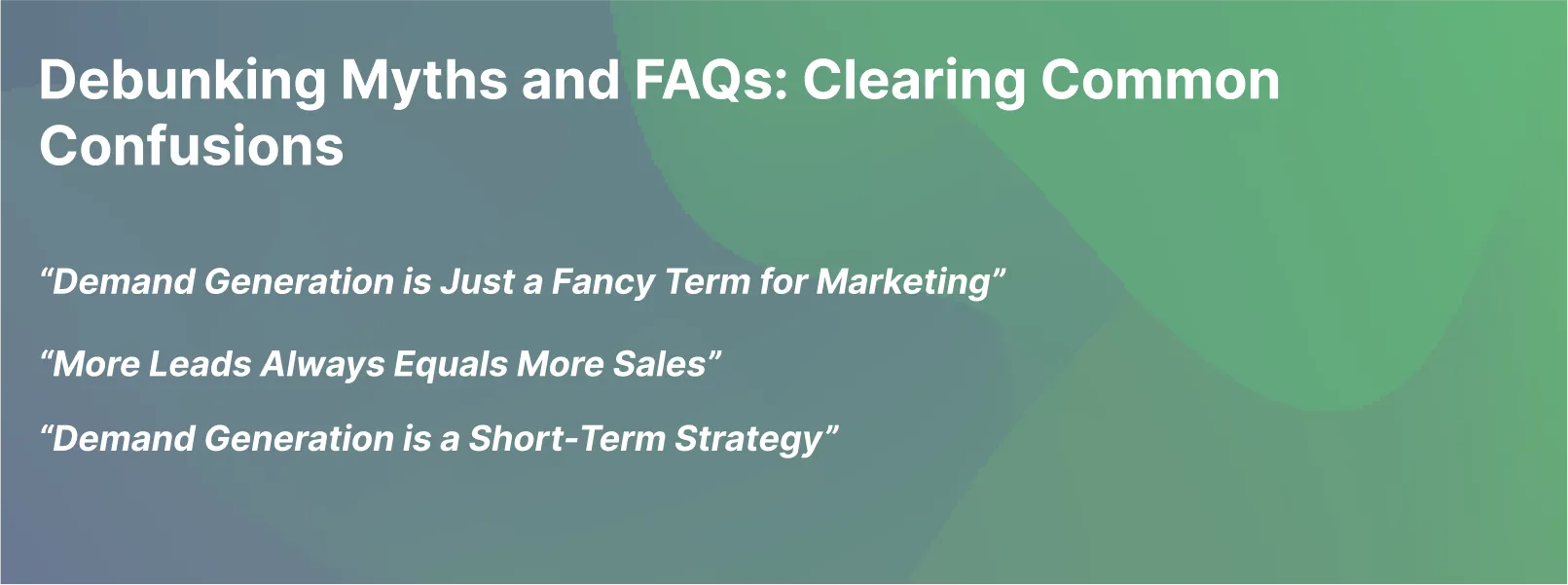Understanding Demand Generation: A Comprehensive Guide

What is Demand Generation?
Are you familiar with the term "Demand Generation?" If not, don't worry; you're in the right place. Demand Generation marketing is more than a buzzword; it's a strategic approach that businesses use to create awareness and interest in their products or services.
Imagine you've just launched a new line of eco-friendly cleaning products. How do you get people to know about it? How do you make them want it? That's where the Demand Generation program comes into play.
In simple terms, a Demand Generation campaign is about creating a demand for your product or service. With demand generation marketing efforts, It's like planting a seed in the minds of potential customers, nurturing it with the right content, offers, and engagement, and watching it grow into a thriving interest.
Sounds intriguing, doesn't it? But wait, there's more to it. Let's dive deeper.
How Does It Differ from Lead Generation?
You might be thinking, "Isn't Demand Generation the same as Lead Generation?"
It's a common misconception, but the two are distinct.
Think of Demand Generation as the big picture, the entire journey of attracting, engaging, and nurturing potential customers.
It's about creating awareness, interest, and desire.
Lead Generation, on the other hand, is a specific part of that journey, focusing on capturing contact information and turning interest into tangible, qualified leads.
Here's a practical example:
Demand Generation: You host a free webinar on eco-friendly living, sharing valuable insights, tips, and showcasing your eco-friendly cleaning products.
Lead Generation: At the end of the webinar, you offer a downloadable guide on "10 Easy Steps to an Eco-Friendly Home" in exchange for attendees' email addresses.
See the difference in demand generation vs. Lead generation?
Demand Generation is about creating a need, while Lead Generation is about capturing that need. One sets the stage, and the other takes a bow.
The Interplay Between Demand and Lead Generation
Now that we've distinguished between successful Demand Generation strategy and Lead Generation strategies let's explore how they work together. It's like a well-choreographed dance, where each step leads to the next, creating a harmonious flow.
Demand Generation is the first dance move, where you catch the eye of your audience.
It's where you make them curious, engaged, and wanting more. Lead Generation is the next step, where you offer something of value to turn that curiosity into a connection.
The interplay between Demand and Lead Generation efforts is a delicate balance. Too much focus on generating leads without building demand can feel pushy. Conversely, creating demand without a clear path to capture quality leads might leave potential customers hanging.
Crafting Winning Strategies: A Three-Part Approach

Ever wondered how some businesses seem to effortlessly attract customers while others struggle? It's not magic; it's a well-crafted Demand Generation strategy. And guess what? You can do it too! Let's break it down into three actionable parts.
Building Personas and Top-of-the-Funnel Content
First things first, who are you trying to reach? Understanding your target audience is like having a roadmap. Without it, you're driving blind.
1. Create Personas: Imagine your ideal customer. What do they like? What are their pain points? Create detailed personas to guide your content creation. It's like having a conversation with a friend; you know what they like, so you know what to say.
2. Develop Top-of-the-Funnel Content: Now that you know your audience, create content that speaks to them. Think of blog posts, videos, or social media posts that answer their questions and solve their problems.
For example, if you're selling fitness equipment, a blog post on "10 Easy Home Workouts for Beginners" could be a hit.
Remember, this stage is about awareness and interest. You're not selling; you're helping. You're building trust.
Converting and monetizing Existing In-Market Demand
So you've got their attention. Now what? It's time to turn that interest into action.
1. Lead Scoring: Not all leads are created equal. Score them based on their interaction with your content. The more engaged they are, the hotter the lead.
2. Develop Downloadable Resources: Offer something of value. A free eBook, a discount code, or an exclusive video tutorial. Make them want to give you their contact information.
3. Utilize SEO and Inbound Marketing: Optimize your content to be found. Use keywords, backlinks, and quality content to rank higher on search engines.
4. Implement Pay-Per-Click Advertising (PPC): Sometimes, a little investment goes a long way. Targeted ads can help you reach those ready to buy.
Here's the golden rule:
Offer value, and they will come. It's not about pushing a sale but pulling them in with what they need.
Aligning Sales & Marketing for Success
Ever heard the saying, "Teamwork makes the dream work?" It's true, especially when it comes to Sales and Marketing.
1. Break the Disconnect: Sales teams and Marketing teams often work in silos. Break those walls. Regular meetings, shared goals, and open communication can work wonders.
2. Develop Product-Specific Content: Equip your Sales team with content that speaks to different products and services. Make them the experts your customers need.
3. Use the Right Tools: From CRM systems to collaboration platforms, using the right tools can streamline the sales process further.
4. Celebrate Success Together: A win for Sales is a win for the Marketing team, and vice versa. Celebrate together, learn from each other, and grow together.
Think of Sales and Marketing as two sides of the same coin. They're different but part of the same currency. Align them, and you'll see magic happen.
Crafting a winning Demand Generation marketing strategy is like baking a cake. You need the right ingredients, the right method, and a sprinkle of creativity.
Innovative Tools and Techniques: A Modern Marketer's Arsenal

In the realm of Demand Generation strategies, the modern marketer's arsenal is filled with a variety of tools and techniques. Let's explore some of the most effective ones, shall we?
Free Tools and Public Relations
1. Embracing Free Tools: Who doesn't love free stuff? Especially when it comes to marketing tools that can boost your Demand Generation efforts. From Google Analytics to HubSpot's free CRM, these tools can make demand generation campaigns provide valuable insights without breaking the bank.
2. Public Relations - A Timeless Technique: Building relationships with the media and your community can be a game-changer. Hosting events, engaging with local news, and sharing your success stories can create a buzz around your brand.
SEO, Inbound Marketing, and PPC
1. SEO - The Backbone of Online Visibility: Want to be found? SEO is your answer. From keyword research to on-page optimization, SEO is vital in driving organic traffic to your site.
2. Inbound Marketing - Attract, Engage, Delight: Content marketing is king, and inbound marketing is its kingdom. Blogs, eBooks, videos - create content that resonates with your audience. Educate them, solve their problems, and they'll come to you.
3. PPC - Paying for Attention: Sometimes, you have to pay to play. PPC marketing campaigns can target specific audiences, ensuring that your ads reach the right people at the right time.
Social Media, Community Building, and Conversational Marketing
1. Social Media - Where Your Audience Lives: Facebook, Instagram, Twitter - your audience is there, and you should be too. Share, engage, and connect. Social media isn't just about posting; it's about building relationships.
2. Community Building - Beyond Followers: A follower is good, but a community member is better. Create forums, host live Q&A sessions, engage with your audience on a personal level. Make them feel part of something bigger.
3. Conversational Marketing - Talk to Me: Chatbots, live chats, personalized emails - conversational marketing is all about one-on-one engagement. It's like having a personal conversation with each of your customers.
Measuring Success: Key Metrics and Benchmarks

Success in Demand Generation isn't just about launching campaigns and hoping for the best. It's about measuring, analyzing, and optimizing. But how do you know if you're on the right track? Let's dive into the key demand generation metrics and benchmarks that will guide you to success.
Metrics for Evaluating Performance
1. Lead Generation Metrics: How many leads are you generating? Are they qualified? Tracking lead quantity and quality is essential. It's not just about numbers; it's about finding the right people.
2. Conversion Rates: So you've got leads, but are they converting? Monitoring conversion rates across different stages of the sales funnel helps you identify bottlenecks and opportunities.
3. Customer Acquisition Cost (CAC): How much does it cost to acquire a new customer? Understanding CAC helps you gauge the efficiency of your Demand Generation efforts.
4. Lifetime Value (LTV): What's the value of a customer over time? LTV gives you insights into long-term profitability.
Benchmarking Data and Goals
1. Industry Benchmarks: How do you stack up against the competition? Industry benchmarks provide a yardstick to measure your performance against others in your field.
2. Historical Data: What worked last year? What didn't? Analyzing historical data helps you identify trends and make informed decisions.
3. Setting SMART Goals: Specific, Measurable, Achievable, Relevant, Time-bound. SMART goals guide your Demand Generation efforts, providing clear direction and measurable outcomes.
Cost Analysis and Revenue Insights
1. Return on Investment (ROI): Are you getting bang for your buck? ROI measures the profitability of your campaigns, helping you decide how much revenue and where to invest your resources.
2. Cost Per Lead (CPL): How much are you spending to acquire each of lead generation marketing efforts? CPL helps you understand the efficiency of different channels and campaigns.
3. Revenue Attribution: Where's the money coming from? Revenue attribution shows you which channels and campaigns are driving revenue.
Inbound Marketing and Sales: Synergy in B2B Demand Generation

Let's explore how inbound marketing and sales strategies can harmonize to create a powerful impact on B2B Demand Generation.
The Role of Inbound Marketing
Inbound marketing is like the opening act of a great performance. It sets the stage, draws the audience in, and creates anticipation. But how does it play a role in B2B Demand Generation?
1. Content Creation: Ever read a blog post that felt like it was speaking directly to you? That's the magic of targeted content. By understanding your audience's needs and pain points, you can create content that resonates.
2. SEO and Social Media: Think of SEO as the spotlight that shines on your content. It ensures that the right people find you at the right time. Social media, on the other hand, is like the buzz that spreads word of mouth.
3. Lead Nurturing: Imagine walking into a store and being greeted by name. That's what lead nurturing does. It personalizes the experience, guiding leads through the buyer's journey.
4. Analytics and Insights: Ever wish you could read your audience's mind? Analytics gives you that insight, helping you understand what works and what doesn't.
Inbound marketing isn't just about attracting leads; it's about engaging them, understanding them, and building a relationship. It's like a friendly conversation that turns strangers into friends.
Sales Strategies and Collaboration
Now, let's talk about the main act: Sales. How do sales strategies align with inbound marketing programs to drive B2B Demand Generation?
1. Sales Enablement: Imagine a sales rep armed with the right tools, insights, and content. That's what sales enablement does. It empowers the sales team to engage leads effectively.
2. Collaboration with Marketing: Ever seen a duet where the singers are out of sync? It's jarring. The same goes for the sales and marketing teams. Collaboration ensures that both teams are aligned, working towards the same goal.
3. Account-Based Marketing (ABM): Think of ABM as a personalized concert for a VIP guest. It's targeted, tailored, and designed to impress. It's about understanding the specific needs of key accounts and delivering a customized experience.
4. Customer Relationship Management (CRM): CRM is like the memory of your business. It remembers every interaction, every preference, and every detail. It helps the sales team engage leads with context and understanding.
Sales isn't just about closing deals; it's about building relationships, understanding needs, and delivering value to existing customers. It's a partnership, not a transaction.
In B2B Demand Generation programs, inbound marketing and sales are like two sides of the same coin. They complement each other, creating a synergy that drives success.
Building Brand Awareness: A Strategic Approach

Let's dig into the strategic approach to building brand awareness that can help your business bloom.
Identifying Buyer Personas
Imagine walking into a room and knowing exactly what everyone needs. That's the power of understanding your buyer personas.
1. Research Your Audience: Who are they? What do they need? What are their pain points? Dive into market research, surveys, and interviews to get a clear picture.
2. Create Detailed Profiles: Think of this as painting a portrait of your ideal customer. Age, occupation, interests, challenges - every detail helps you understand them better.
3. Tailor Your Message: Now that you know who you're talking to, you can craft messages that resonate. It's like writing a personal letter to each potential customer.
4. Monitor and Adjust: People change, and so should your personas. Keep an eye on them, and don't be afraid to tweak as needed.
Thought Leadership and Social Media Presence
Ever followed someone because their thoughts inspire you? That's thought leadership. And in today's digital age, social media is the stage.
1. Share Your Expertise: Got insights? Share them. Write blogs, create videos, and host webinars. Show the world that you know your stuff.
2. Engage with Your Audience: Social media is not a monologue; it's a conversation. Respond to comments, ask questions, be part of the community.
3. Collaborate with Influencers: Think of this as a duet with someone who shares your passion. It amplifies your voice and reaches new audiences.
4. Measure and Analyze: What's working? What's not? Keep track of your social media metrics to understand and improve.
Thought leadership is not about boasting; it's about adding value.
It's about being the go-to person in your field; the one people turn to for insights and inspiration.
Public Relations and Go-to-Market Strategies
Launching a product? Announcing a partnership? Public Relations (PR) and Go-to-Market (GTM) strategies are your megaphones.
1. Craft Your Story: What's your news? Why does it matter? Create a compelling narrative that captures attention.
2. Choose the Right Channels: Press release? Blog post? Social media? Pick the channels that reach your audience best.
3. Collaborate with Media: Build relationships with journalists and bloggers. They can help spread your message far and wide.
4. Align with Sales and Marketing: Your GTM strategy should be a team effort. Sales, marketing, product - everyone plays a part.
5. Measure Success: Did you reach your goals? Analyze the results to understand what worked and what didn't.
Optimizing Inbound Marketing: A Tactical Guide

Inbound marketing is like cooking a gourmet meal. You need the right ingredients, the right recipe, and the right techniques to create something truly delicious. In the world of Demand Generation, inbound marketing is your kitchen, and this guide is your cookbook. Ready to whip up something amazing? Let's dive in!
Blogging, SEO, and Paid Advertising
Blogging: Think of blogging as the appetizer of your marketing meal. It's what gets people interested and hungry for more.
- Find Your Niche: What are you passionate about? What do your readers crave? Find that sweet spot and write about it.
- Create Quality Content: No one likes a bland dish. Spice up your blog with engaging, informative content.
- Promote Wisely: Share your blog on social media, email newsletters, and more. Get the word out!
SEO: Search Engine Optimization (SEO) is like seasoning. It's what makes your content tasty to search engines.
- Use Relevant Keywords: Think of keywords as your flavor profile. Use them wisely to make your content irresistible to search engines.
- Build Quality Backlinks: These are like the secret ingredients that give your content a unique flavor.
- Monitor and Adjust: Taste as you go. Adjust your SEO strategies as needed to keep your content delectable.
Paid Advertising: Sometimes, you need a little extra sizzle. Paid advertising can put your content front and center.
- Choose the Right Platform: Google Ads, Facebook Ads, LinkedIn Ads - pick the platform that reaches your audience.
- Set a Budget: Don't overspend on the garnish. Set a budget that makes sense for your business.
- Track and Analyze: Keep an eye on how your ads are performing. Adjust as needed to get the most bang for your buck.
Gated Content, Lead Generation, and Conversion Optimization
Gated Content: This is like a special course in a meal that requires a reservation. It's exclusive content that requires something in return - usually contact information.
- Create Valuable Content: Make it worth the "price" of admission. eBooks, webinars, exclusive videos - offer something special.
- Promote Effectively: Let people know what's behind the gate. Tease the content to entice sign-ups.
- Follow Up: Once they're in, keep them engaged. Send thank-you emails, offer additional resources, and build the relationship.
Lead Generation: Think of leads as potential dinner guests. You want to invite them in and make them feel welcome.
- Create Enticing Offers: What will make them RSVP? Special discounts, free trials, exclusive content - make them an offer they can't refuse.
- Use Effective CTAs: Your Call to Action (CTA) is like a formal invitation. Make it clear, compelling, and easy to follow.
- Nurture the Relationship: Don't just invite them in and forget about them. Send follow-up emails, offer additional resources, and keep the conversation going.
Conversion Optimization: This is the main course. It's where you turn interested readers into loyal paying customers.
- Understand Your Audience: What do they want? What do they need? Understand their desires and cater to them.
- Test Different Strategies: Try different recipes. A/B test your landing pages, CTAs, and more to find what works best.
- Analyze and Improve: Keep an eye on your conversion rates. Adjust as needed to keep them climbing.
Email Marketing, Chatbots, and More
Email Marketing: This is like sending out personalized dinner invitations. It's a direct line to your potential customers.
- Segment Your List: Not everyone likes the same dish. Segment your email list to send targeted, relevant content.
- Create Engaging Content: Make your emails interesting, informative, and engaging. Add a personal touch.
- Analyze and Adjust: Keep track of open rates, click-through rates, and more. Adjust as needed to keep your emails effective.
Chatbots: Think of chatbots as your virtual waitstaff. They're there to answer questions, guide customers, and enhance the experience.
- Choose the Right Platform: Find a chatbot platform that fits your needs and budget.
- Program Effectively: Make your chatbot helpful, engaging, and friendly. It's a virtual extension of your customer service.
- Monitor and Improve: Keep an eye on how your chatbot is performing. Make adjustments as needed to keep it effective.
Debunking Myths and FAQs: Clearing Common Confusions

Ready to clear up some common confusions? Let's dive in!
Common Misconceptions and Best Practices
Misconception 1: Demand Generation is Just a Fancy Term for Marketing
Truth: Nope, it's not just a synonym. While marketing aims to promote a product or service, Demand Generation focuses on creating awareness and interest specifically. It's like comparing apples to apple pie; both are related but not the same thing.
Best Practice: Understand the unique goals and strategies of Demand Generation. It's not just about selling; it's about building relationships and nurturing leads.
Misconception 2: More Leads Always Equals More Sales
Truth: Quantity doesn't always mean quality. Gathering a mountain of leads without proper qualification is like catching fish without checking if they're the right kind.
Best Practice: Focus on quality leads that align with your target audience. It's not about casting the widest net; it's about casting the right one.
Misconception 3: Demand Generation is a Short-Term Strategy
Truth: Think of Demand Generation as a marathon, not a sprint. It's a long-term game that requires patience, persistence, and a well-planned strategy.
Best Practice: Plan for the long haul. Build relationships, nurture leads, and understand that success in Demand Generation doesn't happen overnight.
FAQs on Demand Generation
Q: What's the Difference Between Demand Generation and Lead Generation?
A: Think of Demand Generation as the big picture and Lead Generation as a piece of that puzzle. Demand Generation is about creating awareness and interest in your brand, while Lead Generation focuses on capturing those interested parties' information for further nurturing.
Q: How Do I Measure Success in Demand Generation?
A: Success in Demand Generation isn't just about the number of leads. It's about the quality of those leads and how they move through the sales funnel. Metrics like lead conversion rate, customer acquisition cost, and customer lifetime value can provide a more nuanced view of success.
Q: Can Small Businesses Benefit from Demand Generation?
A: Absolutely! Demand Generation isn't just for the big players. Small businesses can benefit by building awareness, attracting quality leads, and nurturing relationships. It's like planting a garden; you don't need acres of land to grow something beautiful.
Q: How Do I Get Started with Demand Generation?
A: Starting with Demand Generation is like baking a cake; you need the right ingredients and a good recipe. Identify your target audience, create valuable content, utilize various channels like social media and email, and monitor your results. Don't forget to taste and adjust as you go!









